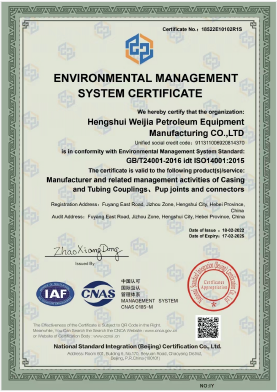- Afrikaans
- Albanian
- Amharic
- Arabic
- Armenian
- Azerbaijani
- Basque
- Belarusian
- Bengali
- Bosnian
- Bulgarian
- Catalan
- Cebuano
- Corsican
- Croatian
- Czech
- Danish
- Dutch
- English
- Esperanto
- Estonian
- Finnish
- French
- Frisian
- Galician
- Georgian
- German
- Greek
- Gujarati
- Haitian Creole
- hausa
- hawaiian
- Hebrew
- Hindi
- Miao
- Hungarian
- Icelandic
- igbo
- Indonesian
- irish
- Italian
- Japanese
- Javanese
- Kannada
- kazakh
- Khmer
- Rwandese
- Korean
- Kurdish
- Kyrgyz
- Lao
- Latin
- Latvian
- Lithuanian
- Luxembourgish
- Macedonian
- Malgashi
- Malay
- Malayalam
- Maltese
- Maori
- Marathi
- Mongolian
- Myanmar
- Nepali
- Norwegian
- Norwegian
- Occitan
- Pashto
- Persian
- Polish
- Portuguese
- Punjabi
- Romanian
- Russian
- Samoan
- Scottish Gaelic
- Serbian
- Sesotho
- Shona
- Sindhi
- Sinhala
- Slovak
- Slovenian
- Somali
- Spanish
- Sundanese
- Swahili
- Swedish
- Tagalog
- Tajik
- Tamil
- Tatar
- Telugu
- Thai
- Turkish
- Turkmen
- Ukrainian
- Urdu
- Uighur
- Uzbek
- Vietnamese
- Welsh
- Bantu
- Yiddish
- Yoruba
- Zulu
bull plug pressure rating
Understanding Bull Plug Pressure Ratings A Comprehensive Guide
When it comes to the operation and safety of various industrial systems, the importance of understanding pressure ratings cannot be overstated. One often-overlooked component of pressure systems is the bull plug, a type of fitting used to seal or terminate a pipe or valve. This article delves into the concept of bull plug pressure ratings, detailing their significance, factors influencing these ratings, and best practices for usage.
What is a Bull Plug?
A bull plug, sometimes referred to as a blind plug, is a device used to close the end of a pipe or to seal off an outlet on a valve. These fittings are essential in preventing leaks and ensuring the integrity of pressurized systems. Bull plugs come in various materials, including metal and plastic, and are designed for specific applications that dictate their pressure limits.
The Importance of Pressure Ratings
Pressure ratings indicate the maximum pressure that a device can handle safely. For bull plugs, this specification is critical to preventing system failures, leaks, and potential hazards. Understanding the pressure rating of a bull plug allows engineers and technicians to determine its suitability for particular applications, ensuring that the fittings used can withstand the operational conditions.
Factors Affecting Pressure Ratings
Several factors influence the pressure ratings of bull plugs, including
1. Material Composition Different materials have varying strength characteristics under pressure. Common materials for bull plugs include brass, stainless steel, and various polymers. Each material has a unique failure point, which directly correlates with its pressure rating.
2. Temperature The operating temperature can significantly affect a material's structural integrity. For instance, high temperatures can weaken some materials, causing their pressure ratings to drop. Conversely, extremely low temperatures may make certain materials brittle, increasing the risk of cracking under pressure.
bull plug pressure rating

3. Size and Design The dimensions and design of the bull plug also play a role. Larger plugs or those with more complex designs may have different pressure ratings than smaller, simpler models. Engineers must evaluate these characteristics when selecting a fitting for a specific application.
4. Standards and Certifications Various industry standards, such as ASME (American Society of Mechanical Engineers) and API (American Petroleum Institute), provide guidelines for pressure ratings of fittings, including bull plugs. Compliance with these standards helps ensure that the plugs are tested and rated for safe usage in specified environments.
Best Practices for Selecting Bull Plugs
1. Assess Application Needs Before selecting a bull plug, assess the specific application requirements, including pressure, temperature, and chemical compatibility. This will help in choosing the right material and rating.
2. Consult Manufacturer Specifications Always refer to the manufacturer’s data sheets for pressure ratings. These documents provide valuable information regarding the limits and safe usage of bull plugs.
3. Implement Regular Testing For critical applications, regular testing of pressure fittings, including bull plugs, is essential. This helps in identifying any wear or degradation that could lead to a failure.
4. Training and Awareness Ensure that all personnel involved in the installation and maintenance of pressure systems are adequately trained. Understanding the implications of pressure ratings can prevent accidents and ensure a safer working environment.
Conclusion
Bull plugs play a crucial role in the safety and functionality of pressure systems. Understanding their pressure ratings is vital for engineers and technicians to ensure they are used correctly and safely. By considering factors such as material, temperature, size, and industry standards, one can make informed decisions when selecting bull plugs for various applications. As with all components in high-pressure environments, vigilance, and adherence to best practices are essential in maintaining system integrity and safety.
-
Tubing Pup Joints: Essential Components for Oil and Gas OperationsNewsJul.10,2025
-
Pup Joints: Essential Components for Reliable Drilling OperationsNewsJul.10,2025
-
Pipe Couplings: Connecting Your World EfficientlyNewsJul.10,2025
-
Mastering Oilfield Operations with Quality Tubing and CasingNewsJul.10,2025
-
High-Quality Casing Couplings for Every NeedNewsJul.10,2025
-
Boost Your Drilling Efficiency with Premium Crossover Tools & Seating NipplesNewsJul.10,2025







